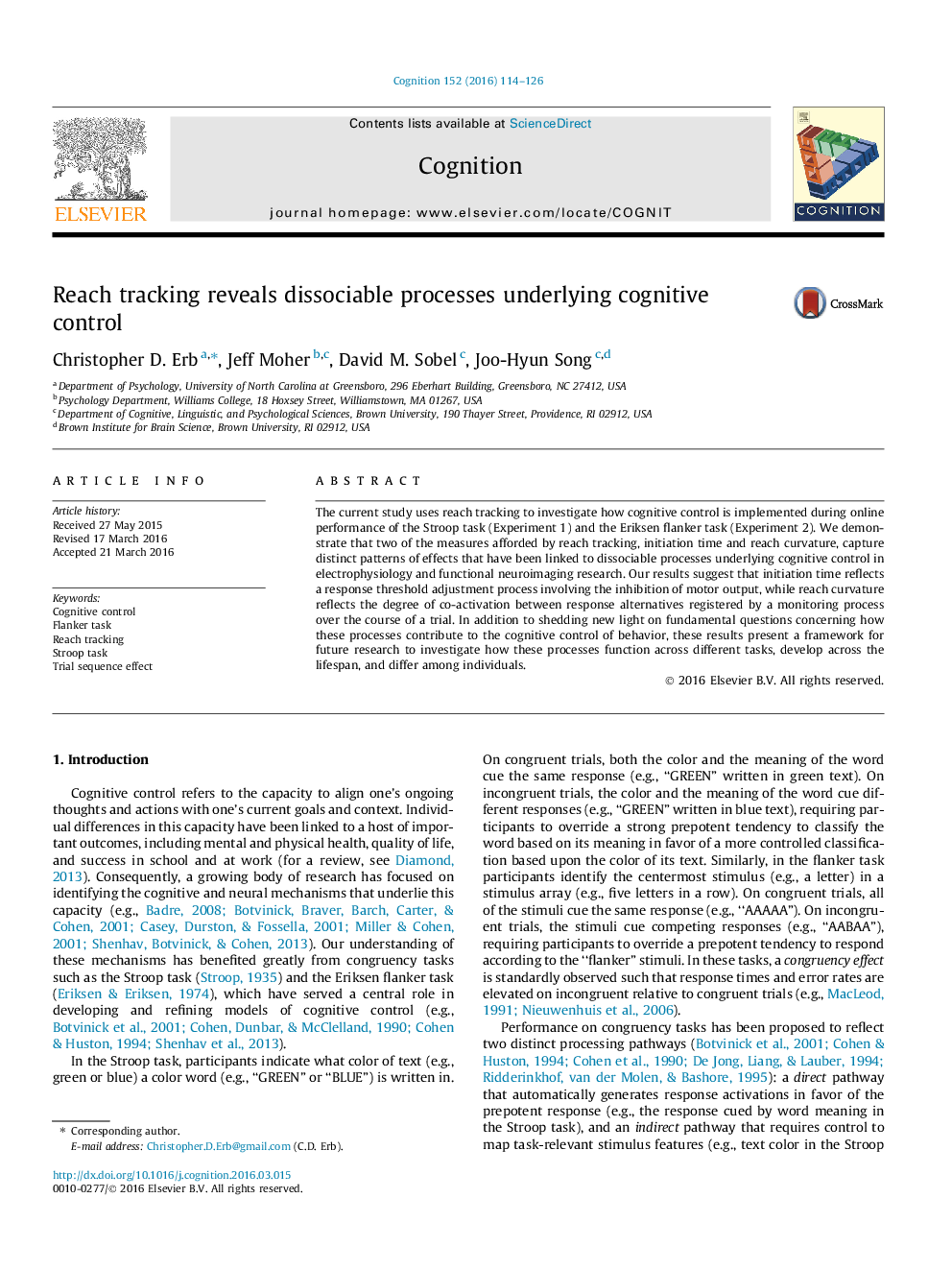| Article ID | Journal | Published Year | Pages | File Type |
|---|---|---|---|---|
| 7286168 | Cognition | 2016 | 13 Pages |
Abstract
The current study uses reach tracking to investigate how cognitive control is implemented during online performance of the Stroop task (Experiment 1) and the Eriksen flanker task (Experiment 2). We demonstrate that two of the measures afforded by reach tracking, initiation time and reach curvature, capture distinct patterns of effects that have been linked to dissociable processes underlying cognitive control in electrophysiology and functional neuroimaging research. Our results suggest that initiation time reflects a response threshold adjustment process involving the inhibition of motor output, while reach curvature reflects the degree of co-activation between response alternatives registered by a monitoring process over the course of a trial. In addition to shedding new light on fundamental questions concerning how these processes contribute to the cognitive control of behavior, these results present a framework for future research to investigate how these processes function across different tasks, develop across the lifespan, and differ among individuals.
Related Topics
Life Sciences
Neuroscience
Cognitive Neuroscience
Authors
Christopher D. Erb, Jeff Moher, David M. Sobel, Joo-Hyun Song,
